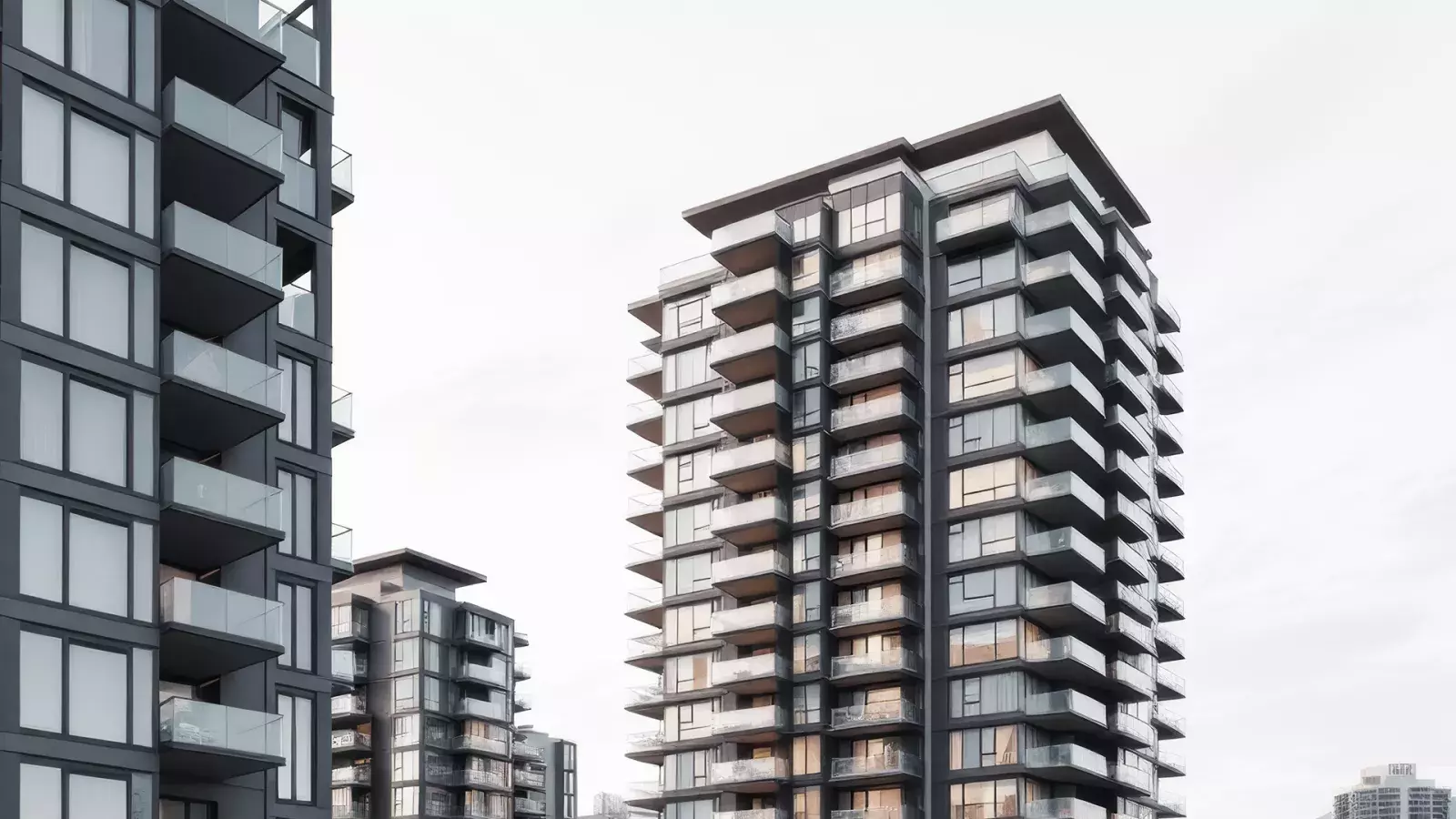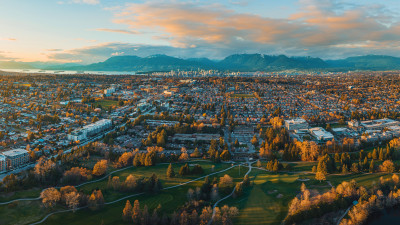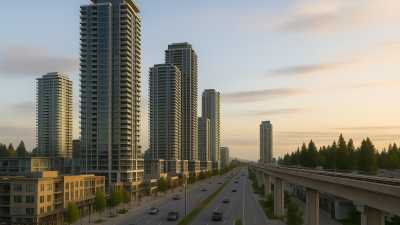As Metro Vancouver and the Fraser Valley grapple with an ongoing housing affordability crisis, purpose-built rentals (PBR) are emerging as one solution to ease the pressure on the tight rental market. Unlike condos that are often purchased by investors for resale gains or rental income, purpose-built rentals are typically held by developers and designed exclusively for long-term tenants. With economic shifts underway and increased government incentives on the table, developers are turning toward PBR projects to meet the region's demand for stable rental housing. But can these developments truly alleviate the affordability crunch?
Why Purpose-Built Rentals Are Gaining Momentum
Historically, Metro Vancouver's real estate market has favoured the presale condo model, typically providing faster returns for developers than rental properties, which offer more gradual gains. However, recent data shows that PBR starts outpaced condo starts in 2022 for the first time since 1990, signalling a shift in the region’s rental landscape. This change was driven by a combination of government policies encouraging rental development, relatively flat condo prices, and the desire for more stable, ongoing revenue streams.
This increase in PBR developments reflects rising demand and stronger support for rental housing construction from all levels of government. Policies such as density bonuses and reduced development fees are making PBR projects more financially viable for developers seeking a steady revenue stream. In fact, some condo projects originally slated for sale have since been converted to rentals, answering the growing call for more long-term rental options across Metro Vancouver and the Fraser Valley.
Current Trends in Metro Vancouver's Purpose-Built Rental Market
As of October 2024, Metro Vancouver and the Fraser Valley had 19 PBR projects actively leasing, adding more than 1,400 new rental units across areas such as Coquitlam, East Vancouver, and Langley. These projects cater to modern renters’ needs with amenities such as fitness centres, pet-friendly policies, and rooftop lounges, attracting tenants willing to pay a premium for added convenience.
As expected, rental prices vary significantly based on location and amenities. For instance, units in Downtown Vancouver have some of the highest rents in the region, with one-bedroom units averaging around $3,250 per month, or approximately $5.25 per square foot. Meanwhile, rents in suburban areas like Surrey, Langley, and Abbotsford are comparatively lower, averaging $2,000 per month for a one-bedroom, well under $4 per square foot—making these areas more accessible and appealing for middle-income renters.
Vacancy Rates and Market Dynamics
Historically low vacancy rates have characterized Metro Vancouver’s rental market for decades, contributing to consistently high rental prices. Although the current vacancy rate has levelled off around 0.9%, the market is still tight as demand continues to outpace supply. However, with more PBR units coming online in popular areas like East Vancouver, Burnaby, and Langley, there is cautious optimism for a gradual increase in housing availability.
Rents experienced a slight decrease before stabilizing this year. This moderation in rent growth, compared to the 9.5% increase seen in 2023 and the 19.4% increase post-pandemic, is attributed primarily to new supply entering the market. Additionally, the recent reduction in immigration targets is expected to further ease demand for rental housing, potentially relieving upward pressure on rental prices.
As Garde MacDonald, Director of Advisory for MLA Canada, points out, “The recent increase in purpose-built rentals has provided much-needed breathing room for renters. However, a sustained supply of new rentals will be crucial to keep rent levels stable as demand grows.”
Government Incentives Fuelling PBR Development
The increase in PBR projects can largely be credited to government initiatives aimed at making rental construction more appealing. Programs such as Vancouver’s Secured Rental Policy and the Moderate Income Rental Housing Pilot Program (MIRHPP) incentivize rental housing by allowing greater density and reducing certain development costs. These initiatives not only make PBR projects financially feasible but also encourage developers to include below-market rental units, which contribute to greater housing diversity and affordability.
At the federal level, the National Housing Strategy supports PBR projects through the Apartment Construction Loan Program, which provides low-cost funding to eligible borrowers, making purpose-built rentals an attractive option for developers who may be wary of fluctuating condo demand. This financial backing has helped PBRs gain traction across Metro Vancouver and the Fraser Valley, especially during the current period of market uncertainty.
What This Means for Renters
For renters in Metro Vancouver and the Fraser Valley, the rise in PBR developments brings both advantages and limitations. On the plus side, more PBR buildings mean greater choice and access to a range of rental-specific amenities. Tenants can enjoy enhanced liveability with features like communal workspaces, pet-friendly environments, and thoughtfully designed spaces that cater to urban lifestyles.
Purpose-built rentals also offer a higher level of housing security. As MacDonald explains, “PBR developments provide renters with a unique benefit in that they’re designed to stay rental-only, offering tenants greater housing stability than condos typically do.” This is particularly valuable in a market as volatile as Vancouver’s, where the sale of rental condos can sometimes result in unexpected displacement for tenants.
On the downside, the premium pricing of PBR units in central areas—such as Downtown Vancouver and the West Side—keeps these rentals out of reach for many lower-income households. The median asking rents for newer PBR units in these neighbourhoods exceed $3,000 for a one-bedroom, which means that without additional below-market units, the affordability gap persists.
Are Purpose-Built Rentals a Long-Term Solution?
The rise of PBR projects represents a positive shift for Metro Vancouver’s housing market, yet it is unlikely to fully resolve the affordability crisis. While PBRs help by increasing the supply of rental units, they don’t offer affordable options for all income levels. In the long term, sustained efforts are required to create a balanced mix of affordable and market-rate rentals that truly address the region’s diverse housing needs. Policymakers may need to expand incentive programs targeting below-market rentals and consider policies that support affordable rental options in high-demand areas of Metro Vancouver.
Conclusion: A Step in the Right Direction
The shift toward purpose-built rentals marks a significant evolution in Metro Vancouver’s rental market. As more developers embrace PBRs, the rental landscape is becoming more diverse, offering options that better align with renters' preferences for amenities, stability, and urban accessibility. However, if purpose-built rentals are to be part of a comprehensive solution to the housing crisis, affordability will need to remain a priority.
Moving forward, continued emphasis on rental construction, along with policy adjustments, could create a more inclusive market that accommodates renters across various income levels. Purpose-built rentals offer a promising start, but they represent just one piece of the puzzle in solving the complex housing challenges in Metro Vancouver and the Fraser Valley.



